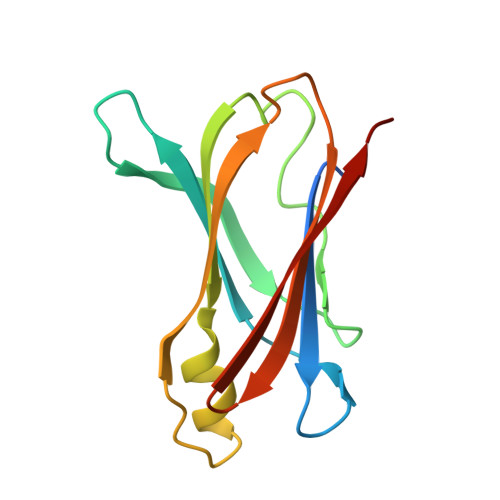Stilbene Boronic Acids Form a Covalent Bond with Human Transthyretin and Inhibit Its Aggregation.
Smith, T.P., Windsor, I.W., Forest, K.T., Raines, R.T.(2017) J Med Chem 60: 7820-7834
- PubMed: 28920684
- DOI: https://doi.org/10.1021/acs.jmedchem.7b00952
- Primary Citation of Related Structures:
5U48, 5U49, 5U4A, 5U4B, 5U4C, 5U4D, 5U4E, 5U4F, 5U4G - PubMed Abstract:
Transthyretin (TTR) is a homotetrameric protein. Its dissociation into monomers leads to the formation of fibrils that underlie human amyloidogenic diseases. The binding of small molecules to the thyroxin-binding sites in TTR stabilizes the homotetramer and attenuates TTR amyloidosis. Herein, we report on boronic acid-substituted stilbenes that limit TTR amyloidosis in vitro. Assays of affinity for TTR and inhibition of its tendency to form fibrils were coupled with X-ray crystallographic analysis of nine TTR·ligand complexes. The ensuing structure-function data led to a symmetrical diboronic acid that forms a boronic ester reversibly with serine 117. This diboronic acid inhibits fibril formation by both wild-type TTR and a common disease-related variant, V30M TTR, as effectively as does tafamidis, a small-molecule drug used to treat TTR-related amyloidosis in the clinic. These findings establish a new modality for covalent inhibition of fibril formation and illuminate a path for future optimization.
- Department of Chemistry, University of Wisconsin-Madison , Madison, Wisconsin 53706, United States.
Organizational Affiliation:

















